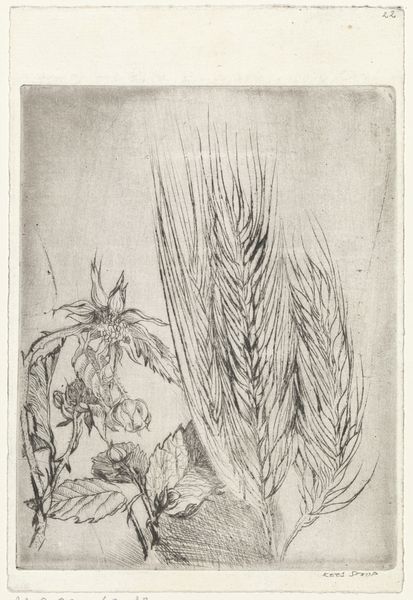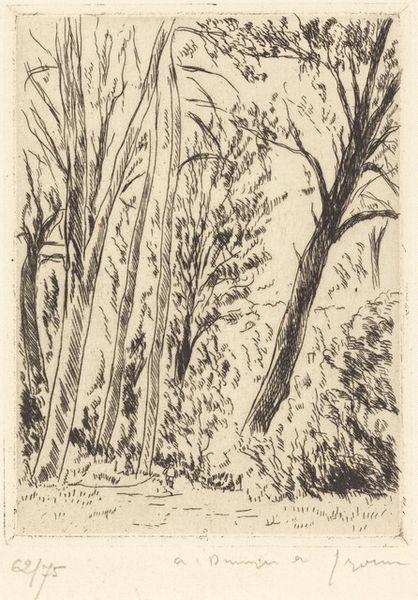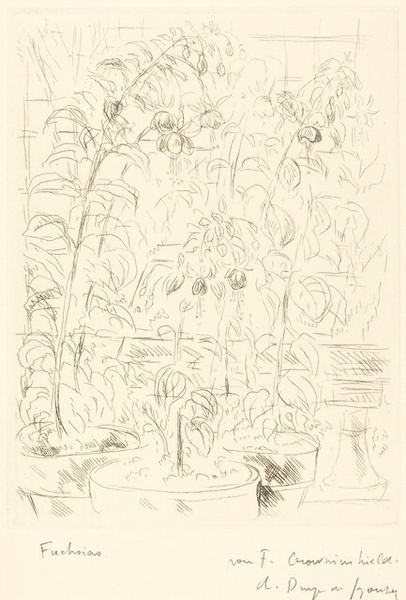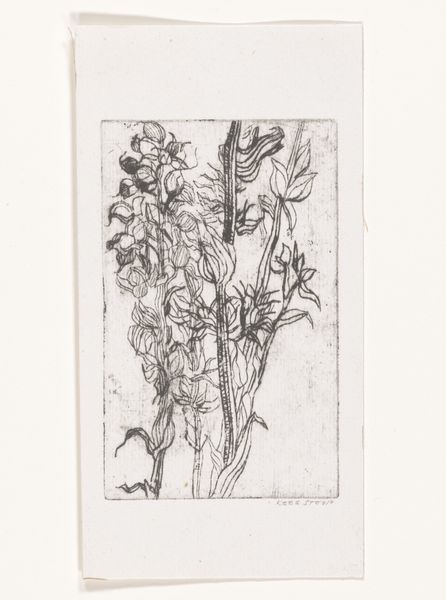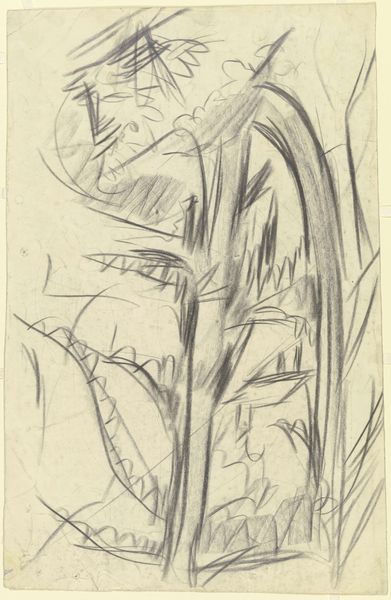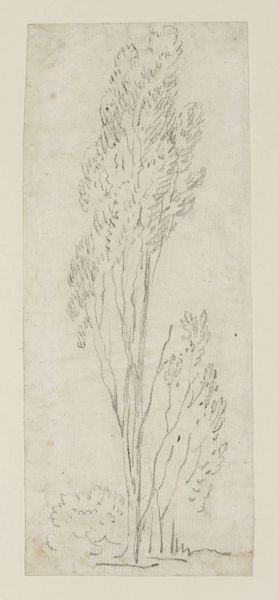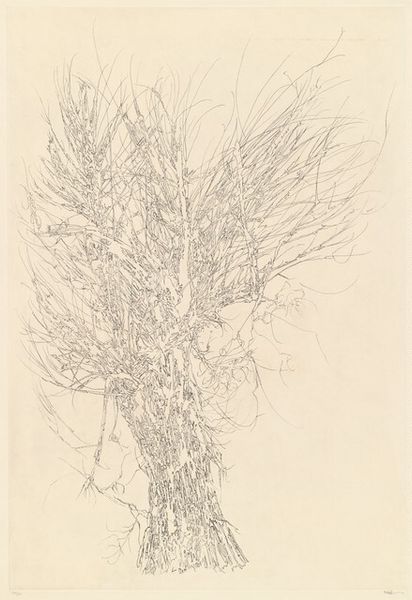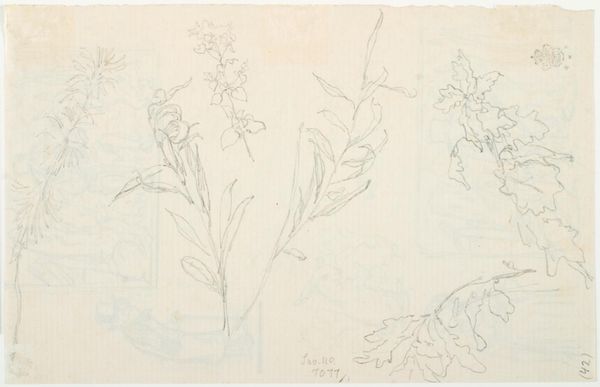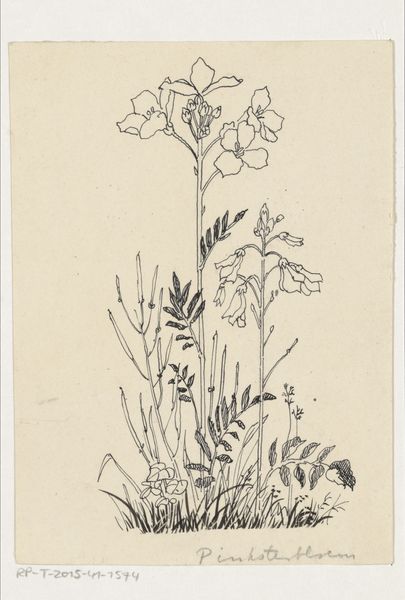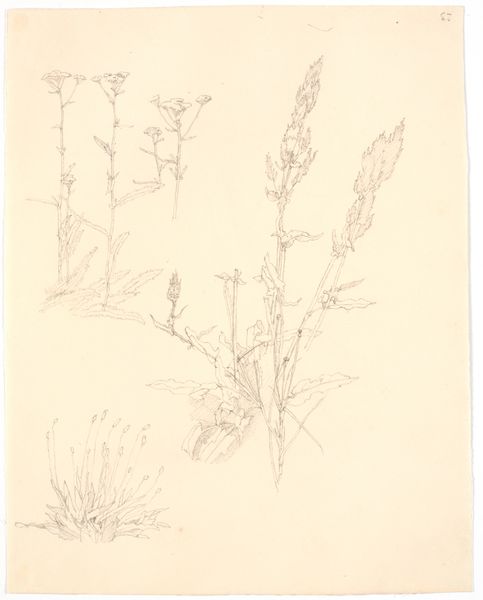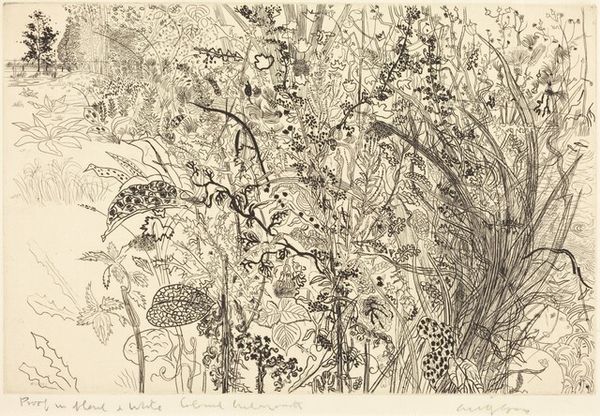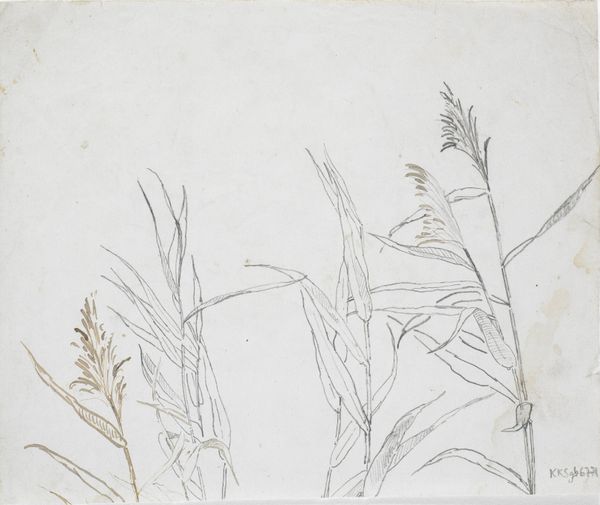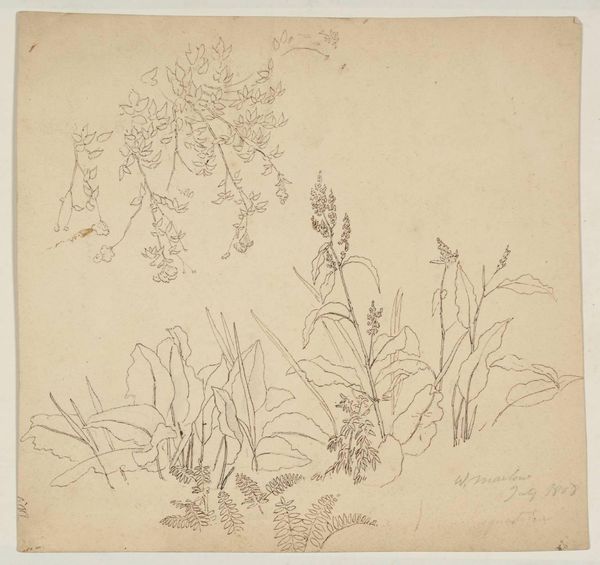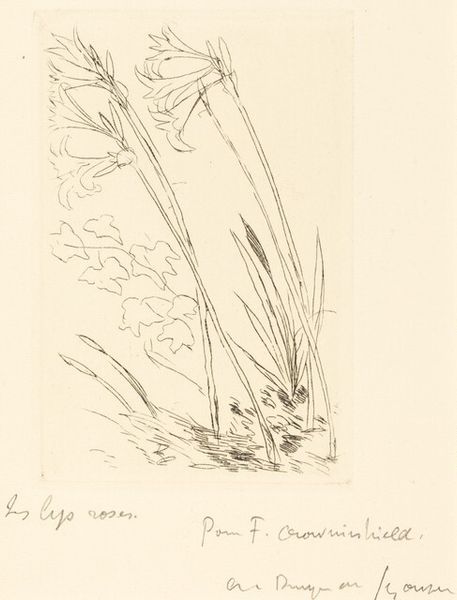
drawing, print, etching, ink
#
drawing
# print
#
etching
#
etching
#
ink
#
line
Copyright: National Gallery of Art: CC0 1.0
Curator: This print, titled "Cannas," was created by Andre Dunoyer de Segonzac sometime between 1929 and 1932 using etching and ink. The work seems to celebrate the unassuming beauty of the natural world. What are your first impressions? Editor: My first impression is one of almost restless energy, despite the static subject matter. The lines vibrate—it's less a peaceful garden and more a captured moment of intense growth. The etching's light touch and myriad lines create an optical illusion. Curator: I see what you mean. The quick, repetitive lines do invoke the idea of rapid growth and transformation. This style of mark-making, especially during the early 20th century, can suggest more than just surface appearance. It digs into the inner vitality. Segonzac, particularly through his printmaking, engaged in this. But why choose such an ordinary subject as a grouping of Cannas? Editor: I wonder if he chose it precisely because of its ordinariness. It resists grand narratives or symbolism, challenging established hierarchy of genres within art. Landscape as subject matter at that time could become politicized quickly, either reinforcing conservative ideas about rural stability or advocating some form of radical connection to the land. Segonzac evades that trap by creating an intense visual experience from humble plant life. Curator: Interesting! Thinking about the deeper psychological draw, the Cannas themselves, while simple, grow in complex systems. Their rhizomes, hidden beneath the surface, speak to hidden, unconscious forces, a web of interconnectedness we might overlook. The print mimics this with the overlaid strokes suggesting unseen layers. This visual language might reflect a broader cultural interest in psychology at the time. Editor: The visual language also emphasizes the role of observation and the fleeting moment. An etching like this captures not only the flowers themselves, but also Segonzac's interaction with them and the light on a particular day. And that links back to the changing politics surrounding the representation of natural life. Was he attempting to move art making beyond strict ideology by simply observing and presenting a moment in time? Curator: Perhaps it was a conscious attempt to connect to nature and life outside of politics by returning to foundational symbolic experiences represented within botanical subject matter. We get to pause and contemplate with him. Editor: It definitely leaves one thinking. Despite what I previously thought, there is a calming and enduring quality to this composition and to its lines. It really stays with you.
Comments
No comments
Be the first to comment and join the conversation on the ultimate creative platform.
